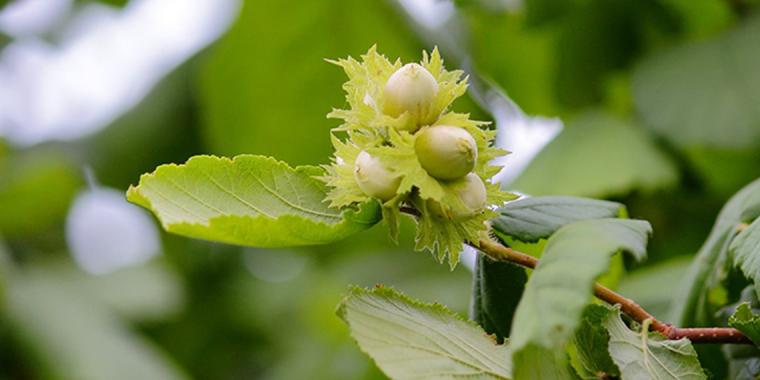
Hazelnuts and chocolate have long been a sweet dynamic duo of choice for many people around the world, including Canadians. Over and above their popularity as the perfect crunchy complement to creamy confections, hazelnuts are widely used in oil form and many savoury recipes. In fact, Canada’s demand for the nut saw 16,000 tons of it, worth approximately $105 million, imported in 2012. Numbers like these beg the question: should Ontario take its relationship with hazelnuts to the next level?
Proving hazelnuts can be a profitable and sustainable business in Ontario is exactly what professor Elliott Currie is doing as part of a research collaboration with Adam Dale and Praveen Saxena (Plant Agriculture), Wanhong Yang (Geography), John Zandstra (Ridgetown) and the Ontario Centres for Excellence (OCE). According to their findings, Ontario farmers in particular are in a strong position to make the business work, considering the amenities already available in the province, including plenty of arable land, a favourable climate – hazelnuts need cold temperatures for the flowers to mature – transportation and water. In the next three to four years, Currie expects Ontario hazelnuts to hit “critical mass.”
“Hazelnuts have the potential to be a sustainable and social win,” he said. “For every job in food manufacturing, 2.3 to 2.8 jobs will be created in the community.”
The jobs will not be short-term either, Currie adds. The hazelnut tree has a life span of up to 100 years, which means generations of farmers will benefit from the trees being planted today. Furthermore, Brantford, Ontario is home to processing plants for Ferrero, maker of Nutella and Rocher, two major products containing hazelnuts. The next step in Currie’s research will require proving the taste and quality of the nut and creating a reliable structure for processing and delivery. It’s a process that will take time, since orchards will need four to five years to mature and start making money.
“Hazelnuts are an investment that requires patient capital,” said Currie. “With entrepreneurial spirit and a long-term vision, our grandchildren will have jobs with the hazelnut crops we’re planting today. Someone planting trees on a smaller acreage of 10 or 20 acres could make upwards of $80,000 per year, making it a great option for rural professionals who have jobs off the farm.”
Launching a hazelnut industry in Ontario is just the beginning, he adds. There is encouragement from the government to diversify crops, and further studies are being done on intercropping, where different crops, such as strawberries, are planted between the hazelnut trees. An understanding of how different ethnicities use the product is also important if it is going to appeal to a broad and diverse consumer base.
“This work isn’t sexy, but it’s long term,” said Currie. “Our whole social life revolves around food. When you go out for Valentine’s Day, you go for dinner. As people do better economically, they look for more protein, sugar and alcohol. There is so much we can do agriculturally in Ontario. This is just the tip of the iceberg.”
